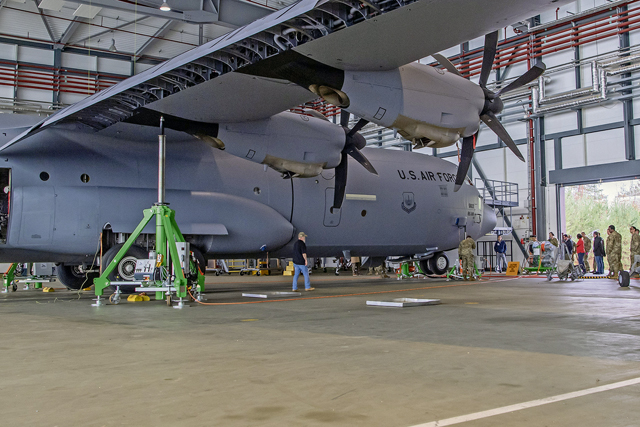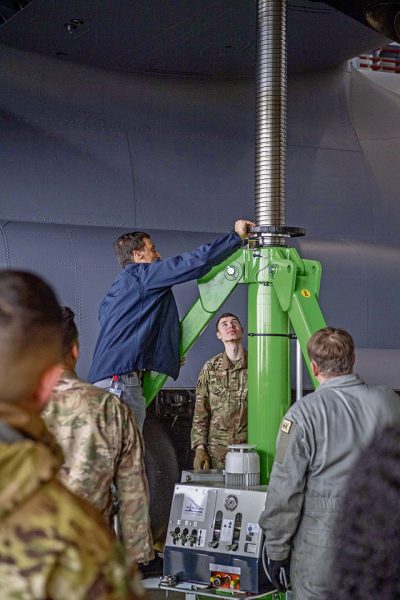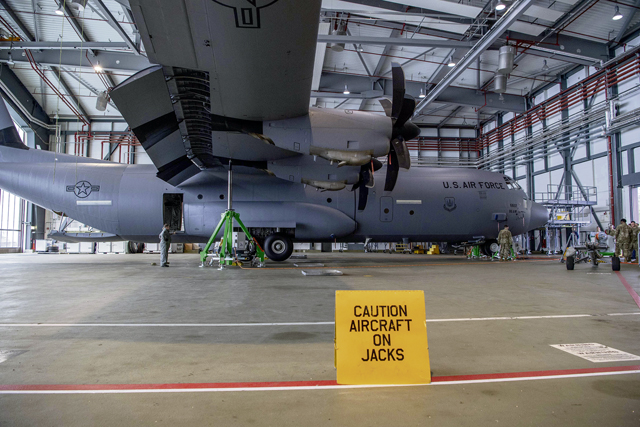
The 86th Maintenance Group teamed up with multiple agencies to conduct a performance evaluation of an electronic jacking and leveling system for C-130J Super Hercules aircraft at Ramstein Air Base, Feb. 22.
Lifting a C-130J demands more manpower and time than almost any other task in the MXG, requiring seven individuals working for eight hours to complete a lift.
The current system is based on methods developed in the 1960s, using sledgehammers and hanging weights to level an object. Multiple points of failure can exist within a manual system and it restricts users from lifting aircraft on an unleveled surface, said Wesley Simmons, Hercules Innovation Lab chief of innovation.
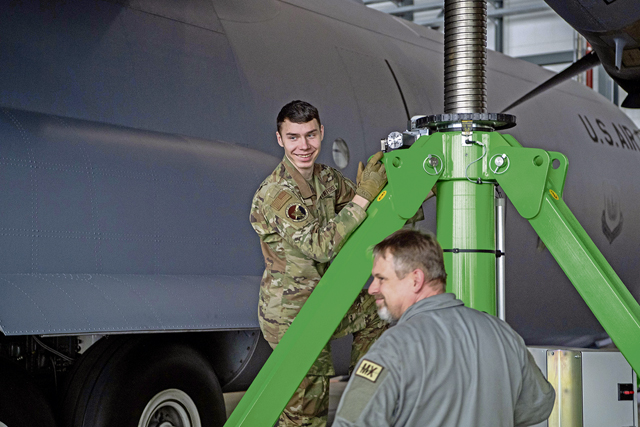
“Every day we solve problems, look for resources to better equip our Airmen, or look to adopt technologies that will improve the way we accomplish our mission,” Simmons said.
The team of 86th MXG Airmen, Air Force Material Command, Tesseract, Hercules Innovation Lab and EJALS manufacturers collected data while lifting a C-130J using the EJALS to evaluate if the system is suitable for use on military aircraft.
If the newly tested jacking system is approved, it could allow for just one Airmen to safely lift a C-130J in only two hours. This would reduce the manpower required for this task by 86 percent.
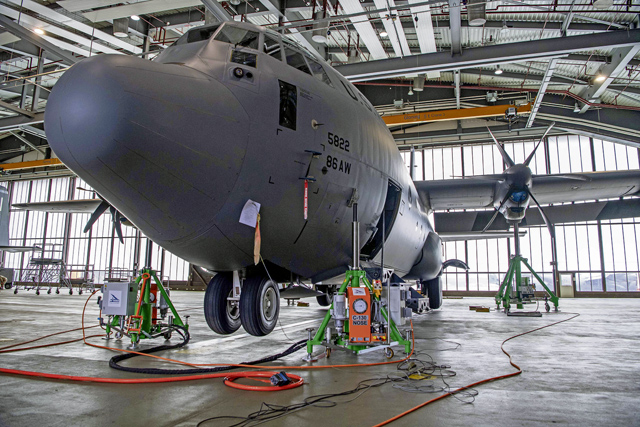
The EJALS is an electrically powered system currently used for civilian aircraft maintenance that utilizes laser leveling technology to lift aircraft, even while on unlevel surfaces.
“This is a huge step forward for the maintenance community,” said U.S. Air Force Senior Master Sgt. Jason Lanehart, 86th Maintenance Squadron maintenance flight chief. “Our guys love them. They work really well and they’re very efficient.”
In addition to maximizing efficiency, the 86th MXG is proud to forge the path for gaining a better understanding of the procedures to get new ideas approved for use within the group, said Lanehart.
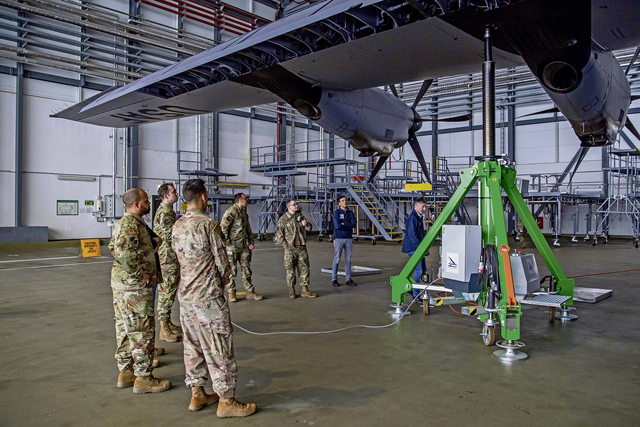
“When we took the first steps into this project there was a huge disconnect from understanding how to introduce new equipment and technology,” Lanehart said. “Once we found the technology, we needed to pause to make sure we went through the appropriate channels before we went live and put it to use.”
The collaboration for approval of the EJALS testing demonstration has taken more than a year, but the process has brought clarity to members of the 86th MXG on how to bring meaningful change to tactics and procedures.
“From my experience, our Airmen are unaware of all the resources they have available to them,” said Simmons. “By expending effort to clearly understand the process and critical causes of breakdowns, our Airmen can focus their efforts to eliminate a problem.”
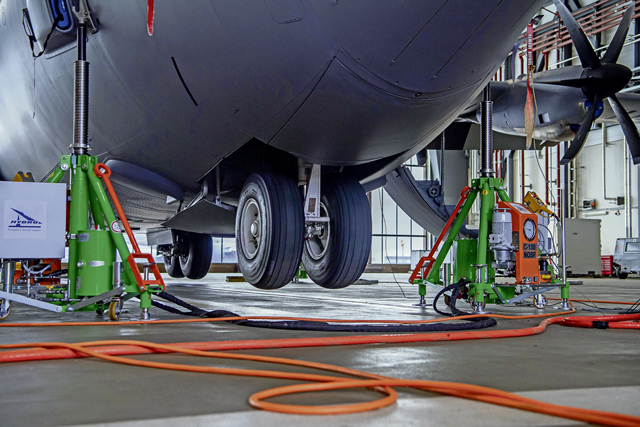
The final approval will be determined by the Air Force. If the EJALS is approved for use with military aircraft, developing guidelines and procedures for Airmen to use Air Force-wide will follow, said Lanehart.
“Innovation is possible,” said Lanehart. “If you find something that’s really worth it, you have to be ready to build in the continuity to keep the project going, it does not always happen as fast as we would like, but it is possible.”
